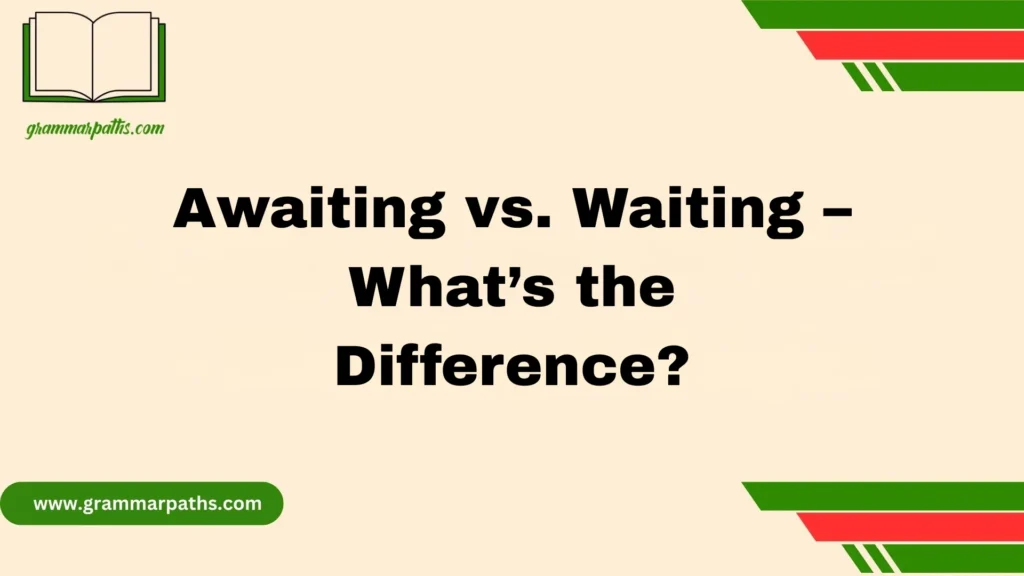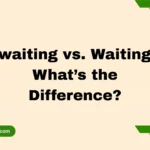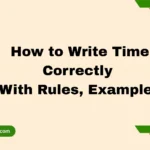When navigating social media platforms, people often encounter phrases that seem casual but leave some wondering about their correctness. One common phrase is “Thanks for the add”. Many users ask, is it correct to say “Thanks for the add”, or should they use a more formal alternative? Understanding the context of this expression is essential. This phrase is typically used on platforms like Facebook, Instagram, and LinkedIn when someone accepts your friend request or connection request. It conveys gratitude, friendliness, and social etiquette in a quick, informal way.
From a grammar perspective, “Thanks for the add” is technically a shortened form of “Thanks for adding me”. While it is widely accepted in informal online communication, it may not suit professional emails or messages. Social media etiquette experts often recommend using it in casual interactions, such as when joining new groups, connecting with peers, or networking with acquaintances. Knowing when to use informal expressions like this ensures your online communication remains polite, appropriate, and engaging. In the digital world, small phrases like “Thanks for the add” can make a positive impression when used correctly.
What Does “Thanks for the Add” Really Mean?
When someone says “Thanks for the add,” they’re simply expressing appreciation for being included in another person’s digital circle.
- On Facebook, it usually means thanks for accepting a friend request.
- On LinkedIn, it refers to establishing a professional connection.
- On Discord or gaming platforms, it often means gratitude for being accepted into a group or server.
- On forums, it acknowledges membership approval.
In short, the phrase works as a casual icebreaker. It doesn’t carry deep meaning, but it sets a polite tone. Much like saying “nice to meet you” after shaking hands, it’s more about the gesture than the actual words.
Is “Thanks for the Add” Grammatically Correct?
This is where debates begin. Traditional grammar rules say that the word “add” is a verb, not a noun. In formal English, you’d expect to hear “Thanks for adding me” instead. But in online spaces, people bend grammar rules all the time.
- Incorrect in strict grammar: “add” as a noun isn’t standard in formal writing.
- Accepted in casual digital language: Communities on Facebook, LinkedIn, and forums treat it as shorthand.
Consider similar shifts:
| Standard Use (Verb) | Informal Use (Noun-like) |
| Please add me to the group. | Thanks for the add. |
| They added new members today. | Did you get my add? |
In essence, while “Thanks for the add” isn’t traditional English, it has become socially acceptable in digital conversations. It’s another example of how online language evolves faster than grammar textbooks.
Social Media Language: Bending the Rules of Grammar
Digital spaces have rewritten the rulebook of communication. On social media, grammar flexes to fit speed, character limits, and cultural trends.
Examples of this include:
- “Unfriend” – a verb invented by Facebook.
- “DM” – short for direct message, used as both noun and verb.
- “Inbox me” – blending noun and verb in one phrase.
These constructions wouldn’t pass in formal essays, yet they’re perfectly normal online. “Thanks for the add” falls into this same category: a phrase born from convenience, not grammar purity.
A case study: In 2008, when Facebook was still growing, “Thanks for the add” became a viral expression because people wanted to acknowledge new digital friendships. Over time, it became part of online culture, even though grammar experts still frown at it.
The Etiquette of Saying “Thanks for the Add”
Should you say it? The answer depends on the platform and audience.
When it feels polite
- Facebook: Commonly accepted, especially in casual social groups.
- Gaming/Discord: Seen as friendly and respectful.
- Niche forums: Works as a quick introduction to others.
When it feels unnecessary
- LinkedIn: Professionals often see it as filler and prefer more meaningful engagement.
- Email networking: Too casual for formal communication.
- Large groups: If hundreds of people join daily, it may come off as spam.
Platform-specific etiquette table
| Platform | “Thanks for the Add” Etiquette |
| Friendly, casual, widely used | |
| Avoid; use professional alternatives | |
| Discord | Acceptable in gaming/chat groups |
| Forums | Fine in small communities |
| Rarely used; not platform-native |
The golden rule: match the tone to the platform. What works on Facebook may feel awkward on LinkedIn.
Cultural Perceptions of Digital Gratitude
The way people interpret gratitude online varies across cultures.
- United States & Western Europe: Directness is valued. “Thanks for the add” is casual but understood.
- Japan & South Korea: Politeness is essential. A generic phrase might be viewed as shallow; personalization matters.
- Latin America: Warm, enthusiastic gratitude is often appreciated; longer greetings are common.
- Generational Divide: Boomers may view it as polite, Millennials and Gen Z may see it as outdated filler.
A quick comparison:
| Group | Likely Reaction to “Thanks for the Add” |
| Baby Boomers | Polite, acceptable |
| Millennials | Neutral, sometimes unnecessary |
| Gen Z | Outdated, may prefer emojis or short quips |
| Eastern Cultures | Expect more personalized messages |
| Western Cultures | Accept short, casual gratitude |
Alternatives to “Thanks for the Add”
If you want to stand out, swap the generic phrase with something more personal or platform-appropriate.
Polite Alternatives
- “Great to connect with you!”
- “Thanks for accepting my request.”
- “I appreciate the connection.”
Professional Alternatives (LinkedIn, email)
- “I look forward to learning from your posts.”
- “Thanks for connecting—I admire your work in [industry].”
- “Glad to be part of your network.”
Casual Alternatives (Facebook, Discord)
- “Hey! Thanks for letting me in.”
- “Happy to join the group!”
- “Appreciate the add—excited to be here.”
Using alternatives signals authenticity and shows you’re not just copying a template phrase.
The Psychology of Online Gratitude
Why does saying thanks matter at all?
- Trust-building: Gratitude increases likability.
- Reciprocity principle: When thanked, people feel more inclined to engage.
- Dopamine effect: Positive acknowledgment triggers small boosts of happiness.
Studies in digital communication show that users who express gratitude, even briefly, see higher engagement rates in communities. It may not double your follower count, but it strengthens rapport.
Why Some Users Find It Awkward or Unsettling
Not everyone loves the phrase. Some find it:
- Empty: It feels like a filler with no real substance.
- Spammy: Especially in groups where dozens of people repeat the same phrase daily.
- Inauthentic: Lacks personalization and effort.
Think of it like receiving a generic birthday card. It’s polite, but it doesn’t feel special. People increasingly value authenticity over formality online
Best Practices: How to Say It the Right Way
If you want to acknowledge an add or connection, here’s how to do it effectively:
- Personalize: Mention something about the person or group.
- Be concise: Don’t write long paragraphs of thanks.
- Match the tone: Keep it professional on LinkedIn, casual on Facebook.
- Add value: Instead of just thanking, share why you’re glad to connect.
Example Templates
- LinkedIn: “Thanks for connecting, Sarah! I’ve been following your insights on marketing trends, and I look forward to learning more.”
- Facebook: “Thanks for adding me! Excited to join this hiking group and share some trail recommendations.”
- Discord: “Thanks for the add—happy to be part of the server! Anyone else into strategy games?”
Broader Lesson: How Language Evolves Online
“Thanks for the add” may sound awkward to grammar purists, but it highlights a bigger truth: the internet reshapes language daily.
Think about it:
- “LOL,” once mocked, is now part of the dictionary.
- “Friend request,” “unfriend,” and “block” didn’t exist before social media.
- Emojis now replace entire words.
This proves one thing—language is alive. It changes to reflect how we live and communicate. Today’s awkward phrase might be tomorrow’s dictionary entry.
Conclusion
In conclusion, “Thanks for the add” is a widely recognized and acceptable phrase in informal social media interactions. While it may not be grammatically perfect, it effectively conveys gratitude, friendliness, and social engagement. Using it appropriately in casual contexts like friend requests, online groups, or social networking platforms helps maintain a positive impression. For professional or formal communication, it is better to opt for more complete phrases like “Thank you for adding me”. Understanding the context and tone ensures that your messages are polite, clear, and suitable for the audience.
FAQs
1. Is it grammatically correct to say “Thanks for the add”?
Yes, it is acceptable in informal contexts, though the full version “Thanks for adding me” is more grammatically precise.
2. When should I use “Thanks for the add”?
Use it in casual social media interactions, like accepting friend requests or joining online groups.
3. Can I use it in professional settings?
It’s not recommended. For work or formal networking, use “Thank you for connecting with me” instead.
4. What does “Thanks for the add” mean?
It expresses gratitude for being added as a friend or connection on a social platform.
5. Are there alternatives to this phrase?
Yes, alternatives include “Thanks for connecting,” “Thank you for adding me,” or “I appreciate the connection.”

Emma Brooke is a passionate language expert and contributor at GrammarPaths.com, where she helps learners navigate the complexities of English grammar, idioms, and effective writing. With a strong academic background and years of teaching experience, Emma excels at turning tricky grammar rules into simple, practical lessons that readers can easily grasp.










